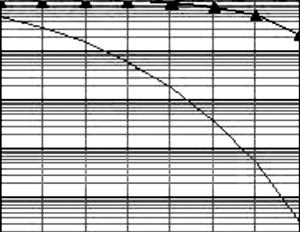Algorithm for forming structure and stages of message transfer in unidirectional radio systems
DOI:
https://doi.org/10.3103/S0735272720050052Keywords:
unidirectional radio system, validity enhancing, malfunctioning, antinoise coding, code sequence, message blockAbstract
The paper presents the substantiation of algorithm for forming the structure and technique for message transmission in unidirectional radio communication systems. The proposed algorithm is intended for use before the beginning of signal transmission for implementing the single-use reliable transmission technique with delayed acknowledgement, but with the possibility of forecasting the interference conditions at the receiving point. The algorithm stages are also discussed and analyzed. The first stage involves the search of the threshold quantity of correctly received symbols of message, the quantity of its blocks and the length of code sequences, which ensure the attaining of required probability of erroneous reception (malfunctioning). The first stage of the algorithm is proposed implying the need to follow a specific order of operations that include gradual increase of the threshold, gradual rise of the quantity of message blocks, and gradual increase of the length of code sequences. The second stage involves the calculation of the structure of discrete messages and algorithm of their transmission that ensure the required probability of correct reception. It is proposed to execute this stage in a specific order that includes gradual increase of the repetition multiplicity of message transmission, gradual rise of the quantity of frequencies for parallel transmission of message, and gradual increase of the length of code sequences. It has been proved that precisely such order of algorithm execution ensures the best indicators regarding the required time and the optimization of the computational complexity (in terms of the number of iterations) in providing the required transmission validity in unidirectional transmission radio systems.References
- “Military Messaging over HF Radio and Satellite using STANAG 4406 Annex E.” URI: http://www.jdunman.com/ww/AmateurRadio/Networking/Military%20Messaging%20over%20HF%20Radio%20and%20Satellite%20using%20STANAG%204406%20Annex%20E.htm (accessed Jun. 12, 2020).
- “Isode’s Solution for BRASS (Broadcast and Ship to Shore).” URI: https://www.isode.com/whitepapers/brass.html (accessed Jun. 12, 2020).
- “P_MUL-A protocol for reliable multicast in bandwidth constrained and delayed acknowledgement (EMCON) environments ACP 142(A),” 2008.
- A. Goldin, J. Hutchings, and M. Malyshev, “Data transmission via a high frequency band,” US Patent US20160173360A1, 2016.
- “Architecture for IP Application Services over HF Radio: Point to Point, Multicast and Broadcast.” URI: https://www.isode.com/whitepapers/ip-over-hf-architecture.html (accessed Jun. 12, 2020).
- V. I. Freyman, “The development and research of control system models using structural methods of noise stability providing,” Mod. High Technol., vol. 0, no. 8, p. 86, 2016, uri: https://www.top-technologies.ru/en/article/view?id=36108.
- S. Rajba, T. Rajba, and P. Raif, “Simulation study of the random access control in the wireless sensor network,” Ukr. Sci. J. Inf. Secur., vol. 19, no. 1, pp. 7–13, 2013, doi: https://doi.org/10.18372/2225-5036.19.4681.
- V. F. Yerokhin and Y. V. Peleshok, “Mathematical model coherent demodulation of synchronous mutually nonorthogonal digital signals with minimum frequency-shift keying,” Visnyk NTUU KPI Seriia - Radiotekhnika Radioaparatobuduvannia, vol. 0, no. 64, p. 41, 2016.
- N. A. Khramova and V. A. Rybkina, “Use of antinoise coding for data encryption,” in Proc. of X Int. Conf. on Teoriya i Praktika Prioritetnykh Nauchnykh Issledovanii, 2019, pp. 67–69, uri: https://www.elibrary.ru/item.asp?id=41537298.
- A. H. Mursaev and E. O. Steblina, “High-performance, cost-effective Hamming codec,” Izv. SPbETU “LETI,” vol. 0, no. 2, p. 17, 2018, uri: https://izv.etu.ru/en/archive/2018/2/17-23.
- R. A. Abbas, A. Al-Sherbaz, A. Bennecer, and P. Picton, “A new channel selection algorithm for the weightless-n frequency hopping with lower collision probability,” in Proceedings of the 2017 8th International Conference on the Network of the Future, NOF 2017, 2017, vol. 2018-Janua, pp. 171–175, doi: https://doi.org/10.1109/NOF.2017.8251245.

Downloads
Published
2020-05-25
Issue
Section
Research Articles

